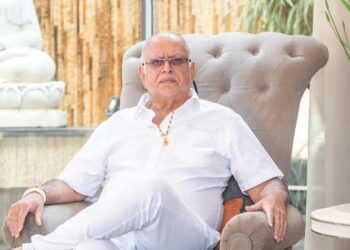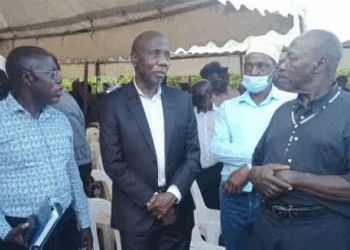By Denis Jjuuko
Between 2011 and 2015, 540,231 vehicles were registered as new in Uganda according to the Uganda Bureau of Statistics’ 2016 Statistical Abstract. This number is exclusive of 6,209 vehicles that were registered for the government in the same period. If you take the five year average, over 1.5 million vehicles have been registered in Uganda over the past 15 years.
The majority of these vehicles are of course used cars and are driven from Mombasa and Dar es Salaam ports into the country through Malaba, Busia or Mitukula custom boarder posts. A very small percentage of less than 10% may be brought in on car carriers or flown into the country. On average, a driver charges UGX 150,000 to drive the car from Mombasa to Malaba or Kampala. That is exclusive of his meals and transport to the port.

When the vehicle arrives at the border posts, it needs custom clearance and the importer usually engages the service of a clearing agent who charges UGX 300,000 on average. There are approximately 350 clearing agents (firms) registered with the Uganda Revenue Authority in 2017. The actual number though of clearing agents is in thousands as many work under the licensed agents. And if a year 100,000 vehicles are cleared, that is approximately UGX 32 billion in their pockets.
To be allowed on the Ugandan road, the vehicle must at least have third party insurance, which costs on average UGX 70,000. If we assume that there are 1.5 million vehicles in Uganda today, it means that the automotive industry alone contributes approximately UGX 105 billion to the insurance sector alone every year.
From the customs boarder post, the car could be driven to a customs bonded warehouse commonly known as Bond (if the taxes haven’t been paid yet) where it is charged about UGX 3,000 per a day for safe custody. A lot of our bonds have very many vehicles earning the owners lots of money every single day.
Once the taxes have been cleared, the car will need to be licensed with plates, which identify it from another. These license plates or number plates as we call them in Uganda cost UGX 140,000. There are two firms, which are licensed to issue them. Again, if 100,000 cars are registered every year, that is UGX 14 billion in the bank. Today, I will not mention the money these companies make on lost and damaged number plates. I will also not mention motorcycles, which are more than cars on the Ugandan roads as well as moveable plants and trailers.

Before the motor vehicle leaves the Bond, its parts such as side mirrors, indicators and window visors among others must be marked and secured with rivets. You see, there are people who easily remove (steal is the correct word) them and sell to others. The marking and riveting costs UGX 50,000 on average. Should we calculate again how much money goes to these guys who normally operate under a tree near the bond?
Form there, the car heads to the garage or fuel station for servicing. Change of engine oil, filters and sometimes brake pads, spark plugs, and many other parts. Wheel alignment and tyre balancing may have to be done. Remember we drive extremely old cars. Sometimes you have to replace tyres and shock absorbers as well. If you are to change all those parts, we are talking about UGX 2m on average for most compact cars in Uganda like a Toyota Vitz or Raum. However, let us restrict ourselves to normal car service where on average UGX 100,000 will be spent. Again, in a year that is UGX 10 billion.
After the service, the car definitely needs a thorough wash so the owner can feel a bit of achievement and self entitlement while on the road. Haven’t you seen the young ladies in their Spacios wearing fake Ray Ban sunglasses in their UBB plated vehicles? The wash costs UGX 20,000 on average.

Talking of fake products, as the owner maneuvers the grinding Kampala traffic, there will be a guy selling some car accessories such as steering wheel covers, seat covers, key rings, car perfumes and the like. Hard to estimate how much these hawkers make a day but it must be handsome given that if you buy a 16-year-old car, most likely its steering wheel will need to be covered.
Banks also extended loans to car buyers as well as the so-called asset financing. They add interest on these loans and excessive application fees. I am told sometimes people even bribe these loan officers or offer them commissions so they are not tossed around for months before their loans are approved. Sometimes people can be that desperate!
Fuel stations in Kampala alone could arguably make this city have the highest number per a capita in the entire world. Every few kilometres, there is a fuel station. With grinding traffic and vehicles that are so old and therefore not fuel efficient, a lot of money everyday goes into this sector by way of buying petrol and diesel. It comes without saying that people buy other lubricants needed for a car to run normally. Car batteries alone made the late James Mulwana a household name.
The cars being so old are prone to breakdowns, which has led to a very thriving spare parts industry. Kisekka market has produced lots of millionaires in Uganda. It is not uncommon to find a trader that has 1000 car engines in his store in Ndeeba or Kibuye. On average, a used engine of a small car costs UGX 4m and about UGX 7m for a Sports Utility Vehicle.

The examples of how the automotive industry cultivates growth of the private sector cannot be exhausted. Most developed countries accrued their economic growth through the automotive industry. When the United States was undergoing a depression in 2008, President Barack Obama upon assuming office in 2009 prioritized the capitalization of the automotive industry. The automotive industry was too big to be let to fail. Failure to support it would have had a catastrophic effect on their entire economy.
The automotive industry employs a substantial amount of people and as we have seen through this article contributes billions of money to the economy every month. And this is largely a market that is dependent on used and sometimes refurbished vehicles. I shudder to imagine what would happen when Uganda starts making its own vehicles.
The writer is a media and communications consultant. Twitter: @Denis_Jjuuko
Do you have a story in your community or an opinion to share with us: Email us at editorial@watchdoguganda.com












